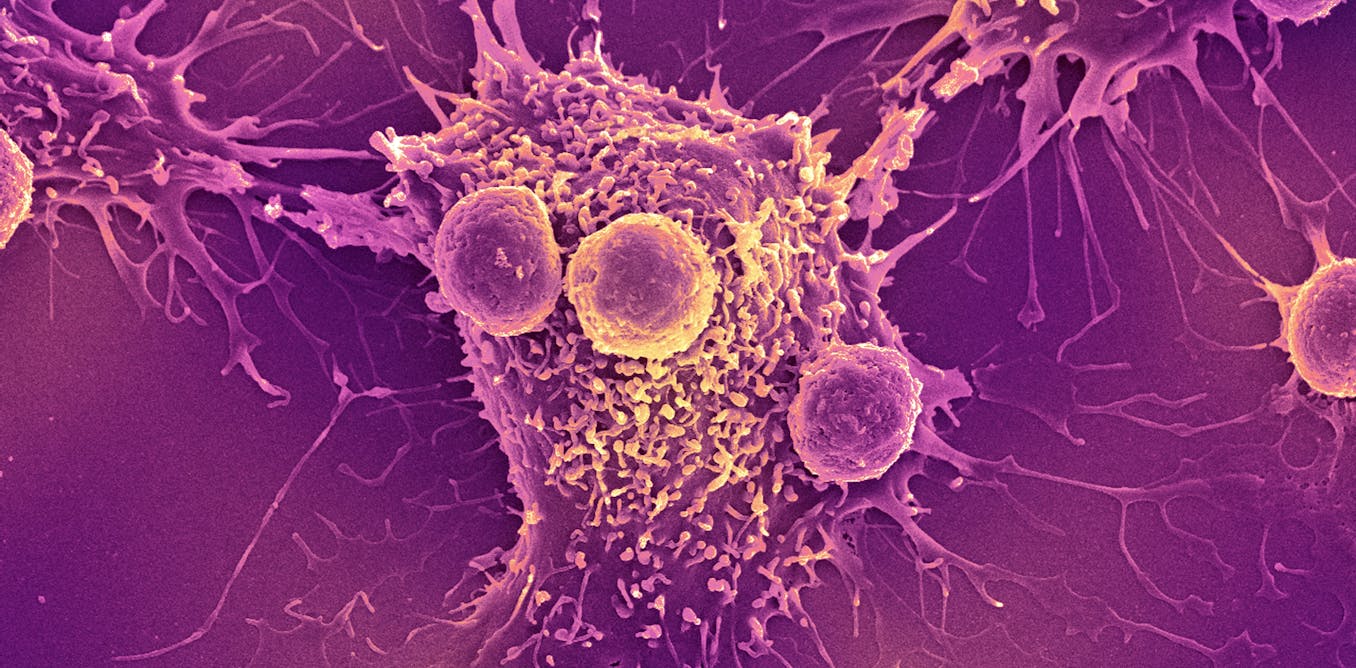In 2021, roughly six per cent of the world’s population, or 529 million people, were living with diabetes, mostly Type 2 diabetes (T2D). In the same year, 1.6 million deaths were attributed to this disease.
T2D is a complex disease that develops over time when the body cannot produce enough insulin and/or cannot use insulin efficiently. These anomalies impair the body’s ability to properly use and store sugars, fats and proteins.
This has consequences.
T2D increases the risk of several diseases, including cardiovascular disease and stroke, and is the leading cause of disability and death worldwide.
Fortunately, T2D is preventable.
As a researcher in nutrition, my work focuses on uncovering nutritional approaches that can help prevent the development of cardiometabolic disease in high-risk individuals.
Blood apoB and T2D
In people with T2D, a high number of particles that carry “bad cholesterol” (called low-density lipoproteins or LDL) — which is measured as “high blood apoB” — is associated with the development of cardiovascular disease.
Historically, high blood apoB, measuring high blood LDL, was believed to be a consequence of T2D (apoB is a protein in LDL that is necessary for their formation).
However, clinical data from my research unit on nutrition, lipoproteins and cardiometabolic diseases at the Institut de recherche clinique de Montréal indicate that high blood apoB is a cause as well as a consequence of T2D. These findings have been confirmed by large populational studies.
However, mechanisms linking high blood apoB to T2D and nutritional interventions to treat them were unknown.
T2D risk factors
A recent analysis of 67 human studies showed that high blood level of omega-3 fatty acids — mainly found in fish oil, EPA (eicosapentaenoic acid) and DHA (docosahexaenoic acid) — is linked to a lower incidence of T2D and cardiovascular disease.
To understand how blood levels of apoB and omega-3 can modulate the risk of T2D, my team recruited 40 healthy volunteers who were not taking medication to participate in a clinical study at the Institut de recherche clinique de Montréal between 2013 and 2019.
The recruited participants followed a 12-week intervention with omega-3 supplementation of 2.7 grams of EPA and DHA per day, while maintaining their usual diet. We measured the participants’ carbohydrate and fat metabolism and inflammatory responses particularly in their adipose tissue (fat) before and after the EPA and DHA supplementation.
It’s important to mention that inflammation is a natural defence mechanism that helps our body fight infection. However, when it persists over a prolonged time even without infection, it promotes the development of chronic diseases, including T2D and cardiovascular disease.
The objective of this study was to explore whether LDL could induce chronic inflammation in participants’ adipose tissue and whether EPA and DHA could treat that.
(Shutterstock)
Promising discoveries
We found that, prior to the EPA and DHA supplementation, subjects with high blood apoB had higher adipose tissue inflammation than subjects with low blood apoB. Adipose tissue inflammation in subjects with high blood apoB was associated with abnormalities in carbohydrate and fat metabolism that increase the risk of T2D and CVD.
Taking EPA and DHA supplements for three months reduced the ability of participants’ LDL to induce inflammation in their own adipose tissue. It also eliminated the link between adipose tissue inflammation induced by LDL or other metabolic and microbial triggers with many risk factors of T2D and cardiovascular disease.
In addition, EPA and DHA improved the participants’ ability to secrete insulin in response to increased blood sugar and to eliminate fat from their blood after the ingestion of a high-fat meal. The more EPA and especially DHA, the greater the reduction in T2D and cardiovascular risk factors.
These findings were published in two articles in the journal Scientific Reports in 2023 and 2024, representing the data before and after the omega-3 supplementation.
An essential fat
EPA and DHA must be obtained through our diet as our body cannot synthesize them in sufficient quantities.
The Heart and Stroke Foundation of Canada recommends eating two portions of fish per week, particularly oily fish such as herring, salmon and mackerel. This intake can provide about three grams of EPA and DHA per week.
Omega-3 fatty acids can also be found in plant-based foods, such as flaxseed and fortified foods. However, the human body cannot convert plant-based omega-3 into EPA and DHA in sufficient quantities.
According to Health Canada, an intake of up to five grams of EPA and DHA per day can help support and maintain cardiovascular health, cognitive health, brain function and mood balance in adults. EPA and DHA can also help reduce blood fat as well as pain associated with rheumatoid arthritis.
Fish oil supplements are another source of EPA and DHA. But it is important to verify that these supplements have received the Internationally Verified Omega-3 (IVO) certification or other third-party certification that ensures that the supplement complies with the world’s highest standards of omega-3 purity and potency.
Our findings suggest that targeting people with high apoB with EPA and DHA may help reduce their risk of T2D and cardiovascular disease.
In other words, omega-3 oil may kill two birds with one stone by preventing two common and debilitating diseases worldwide.
My team is currently studying the paradox of why reducing blood LDL in some individuals can increase their risk of T2D while reducing their risk of cardiovascular. We are also exploring the role of EPA and DHA in this phenomenon. Participation in the study is open to all Canadians.

The post “Omega-3 can help prevent diabetes and cardiovascular disease” by May Faraj, Professor, Université de Montréal/Scientist, Institut de recherches cliniques de Montréal (IRCM), Université de Montréal was published on 04/15/2025 by theconversation.com



































Leave a Reply